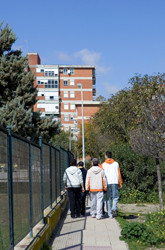Rethinking gang and youth policies
Violent events across Europe involving young migrants and second-generation immigrants have raised a growing concern about gangs in recent years. Consequently, an influx of media stories has increased moral panic and stigmatisation. The EU-funded 'Gangs policies: Youth and migration in local contexts' (YOUGANG)(opens in new window) project explored local policies and national policies as they have changed from being socially exclusive to socially integrating. The focus is both on successes and limitations with the ultimate aim of finding manageable solutions. Using the Spanish experience as a case study, the development of policies relating to gangs over the past 10 years was examined. In particular, the focus was on the cities of Barcelona and Madrid. Since 2006 gangs in Barcelona have been transformed into youth cultural associations registered by the Government of Catalonia. The ultimate aim was to reduce violence. By contrast, in Madrid, the same groups were considered illegal and met with zero tolerance. With the economic crisis, inclusion policies towards gangs came to a standstill. A change in resources and priorities of policymakers has largely contributed to an increase in youth violence on the street in the past couple of years. Findings indicate that if the eradication of gangs is to be successful, they need to be examined from the viewpoint of youth cultures. Polices that reduce harm give way to reducing the negative consequences of particular behaviours. Operating as social spaces of inclusion and opportunities, gangs are an alternative to social exclusion of certain youth. This indicates that public policies need to point towards access of alternative resources. Policymakers and local administrators will find the project results useful and relevant, to be applied at both the local and national level. This could be a step leading to rethinking gang and youth policies.




